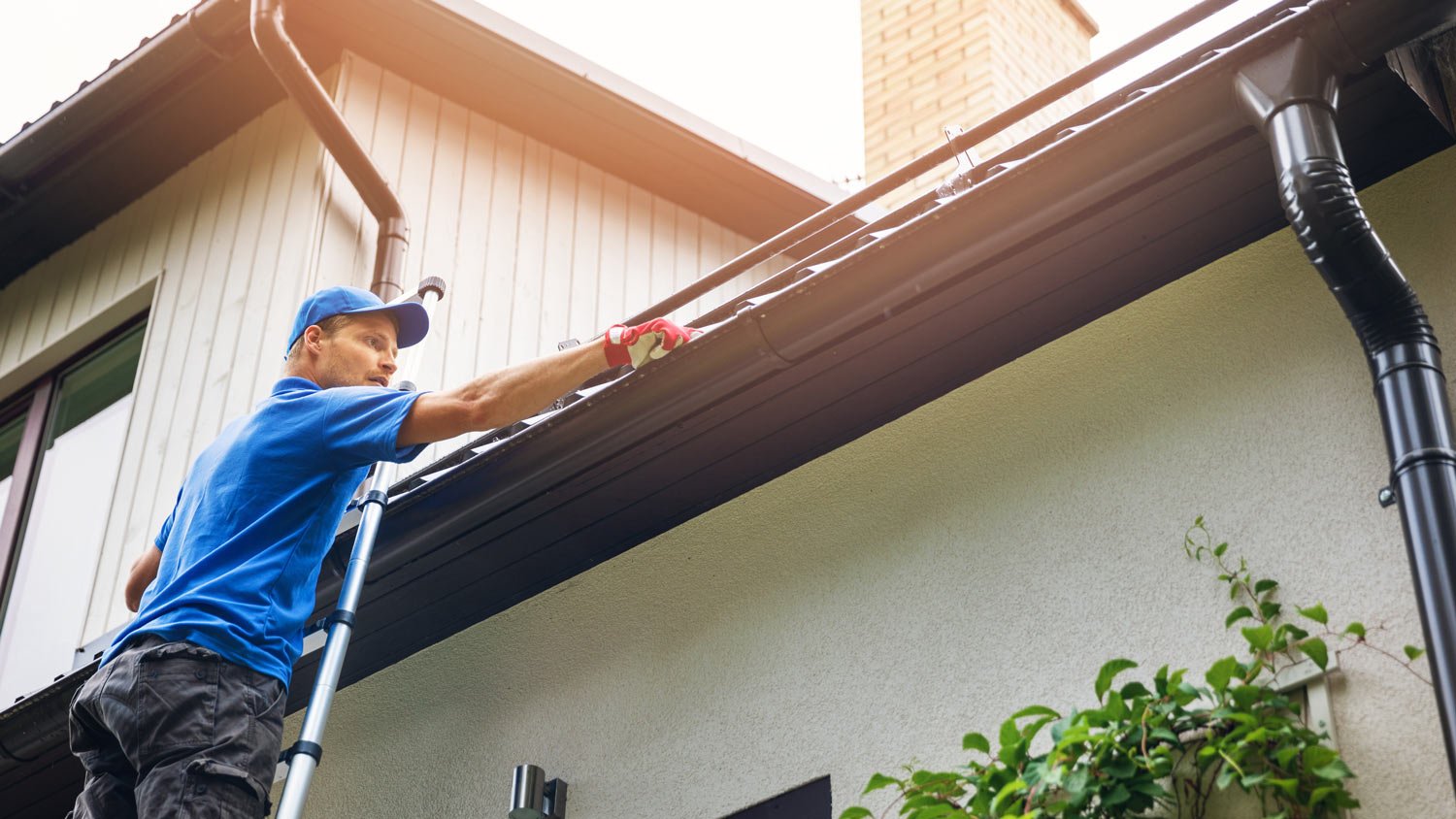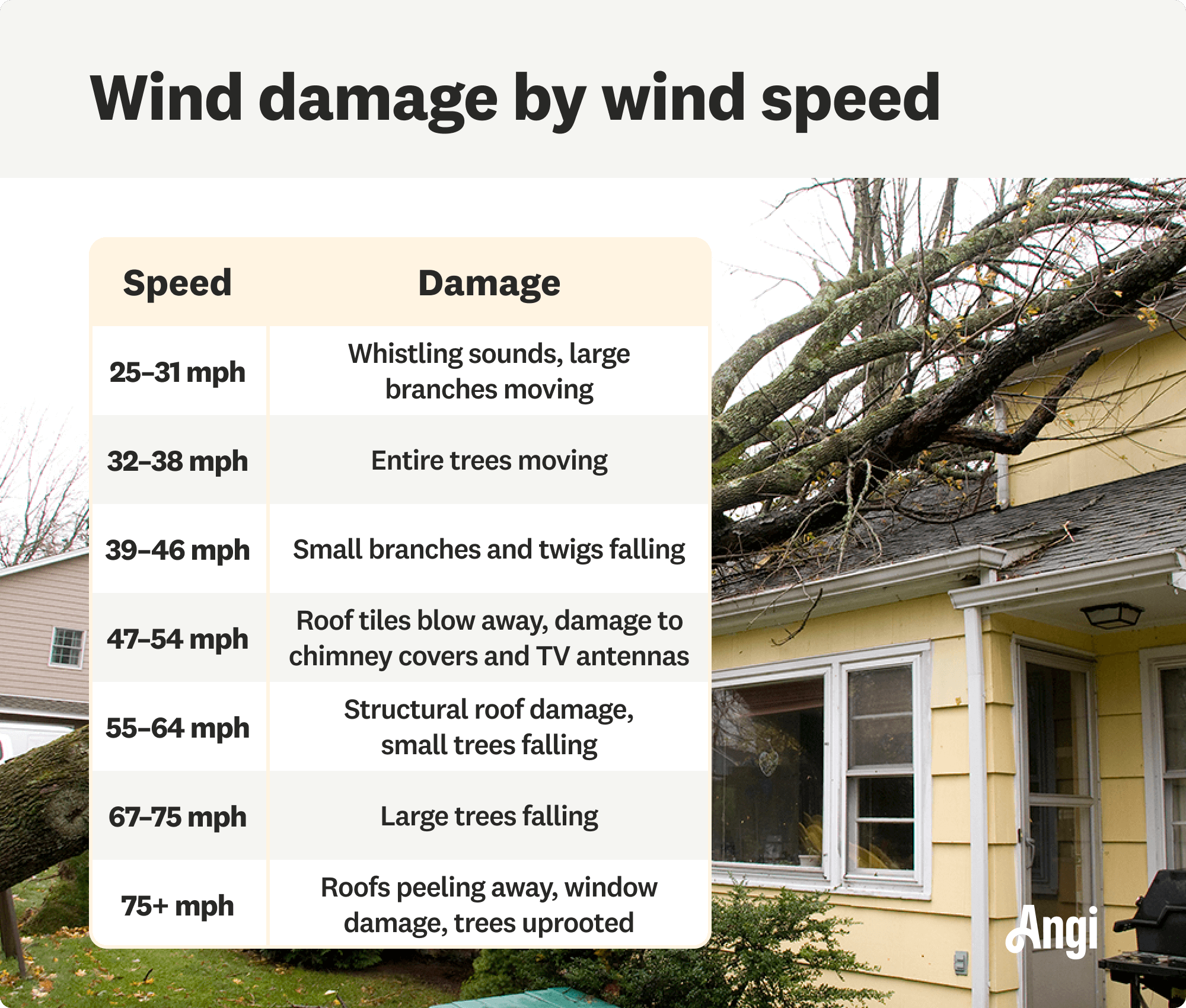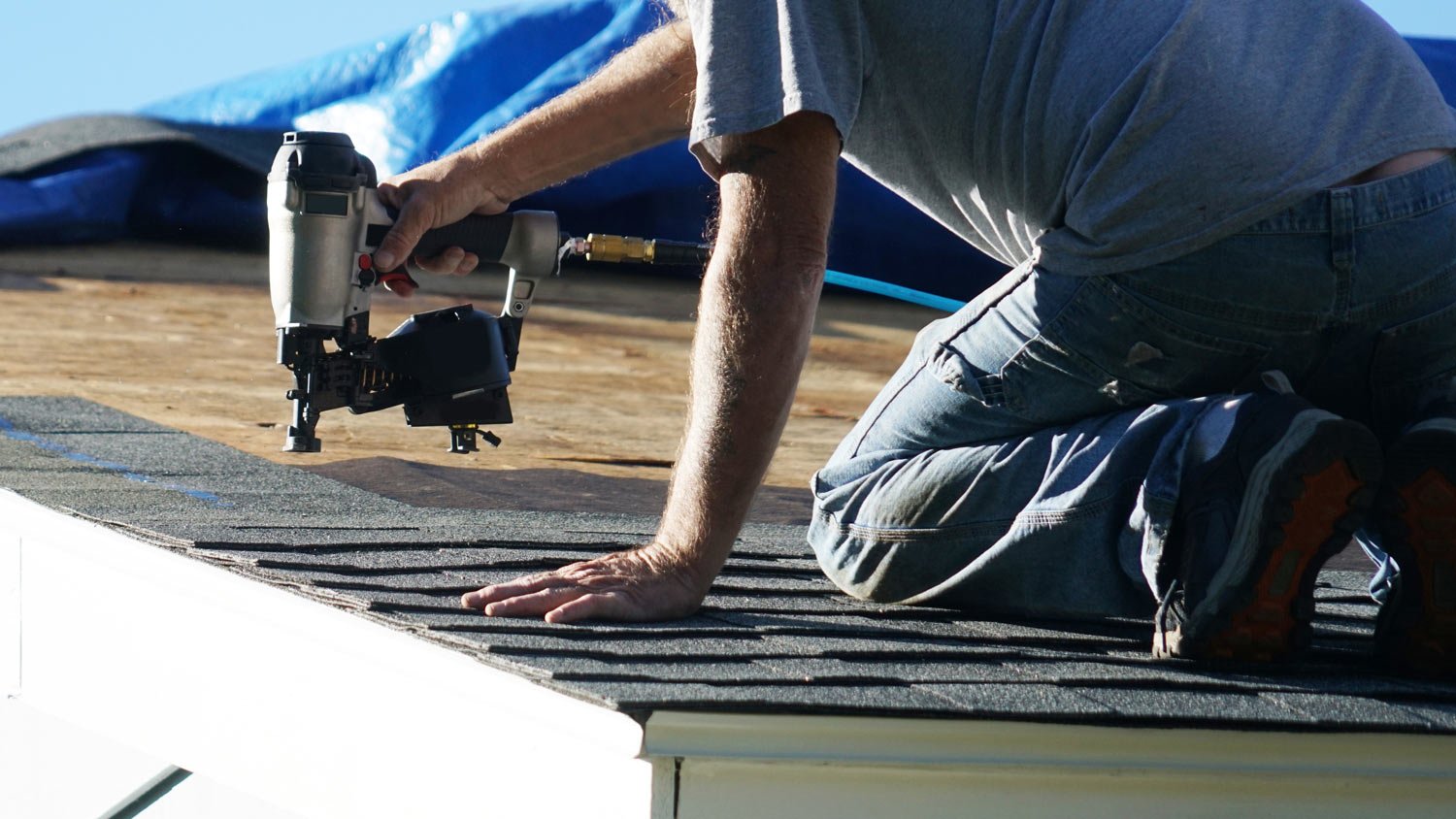
A metal roof can defend your home against Ohio’s varying weather conditions. Learn how much a metal roof costs in Columbus, OH.
You shouldn’t blow off roof wind damage


Winds higher than 47 miles per hour can cause roof damage.
Do a visual check for common signs of high wind roof damage.
Call in a roofing pro to get help with roof repairs.
Most roof shingles can withstand windstorms when installed properly. However, less obvious wind damage to roofs, like cracked, missing, or damaged roof tiles or shingles, can cause homeowners a big headache when the next rainstorm comes along. Poor installation or repairs from a previous roofing contractor and flying debris are two leading causes of roof, skylight, and gutter damage during high wind events.
Once the wind passes, we encourage every homeowner to safely walk around their property from front to back and inspect their roof from the ground, ensuring that nothing is out of place and there is no visible damage to the roof or gutter systems.
The howling and whistling of heavy winds are over, but now you have to deal with their aftermath. Here are some common signs of roof wind damage.
Stand outside and take a look at your roof—do you see missing shingles? The shingles may have blown away completely, leaving the underlayment exposed. Or, you may notice shingles that are out of place and partially blown off.
Lifted or curling shingles may not be as easy to spot from the ground as missing ones. However, if you take a sweeping look at your roof, everything should look uniform. If you notice any areas of the roof that look slightly different, it’s likely that the bottoms of the shingles are lifted or curled up. If you can slip your hand underneath a shingle, then you know for sure that it was damaged.
The granules on your shingles add extra durability to your roof. They increase your roof’s ability to resist fires and protect your shingles from intense weather, including sun and rain. High winds can knock these granules loose, leaving your shingles more vulnerable to extreme weather.
You may be able to spot granule loss from the ground by checking to see if any of your shingles have discoloration. Otherwise, check near the downspouts of your gutter system since granules often get knocked off the roof and drain to the ground with the rainwater.
Your flat roof can sustain wind damage in different ways, including the wind lifting up parts of the roof and leaving wrinkles. For flat rubber roofs, you may see additional damage like cracks or tears.
Your soffit and fascia can loosen or even blow away during high winds. You might also see cracking or bending.
A crooked chimney is fairly easy to spot and will require a pro for repairs. Most chimneys will withstand high-wind events, but if your chimney is older and not well-maintained, it’s possible that you’ll notice severe damage.
Leaks in your attic space or on your ceiling may point to roof damage from high winds. Moisture can seep into your home from many different areas, including exposed underlayment from missing shingles, damaged chimney flashing, or any other area that is no longer properly sealed.
After a heavy storm with high winds, look around your property for signs of storm damage. Here are the things to look out for when assessing wind damage to your roof.
One of the most visible signs of roof damage will be on your roof itself. Step outside, and look up and search for missing, loose, or lifted asphalt shingles, roof tiles, roof metal, or roof slates, depending on your home’s roof materials. Using binoculars, take a look at the ridge caps and vents and check for missing pieces. Pay close attention to the roof edges. This part of the roof tends to be more susceptible to damage from high winds. Lastly, keep assessing and examining the following items if you have them in your house:
Vent covers
Skylights
Solar tubes
Roof-mounted AC units
Solar panels
Large pieces of debris
Tree branches
Before grabbing your ladder, it’s best not to go on your roof for repairs. Getting up on a roof is challenging and potentially dangerous, so this one is best left to a roofing professional.

Strong winds can loosen or blow your gutters away if not fastened properly. Flying debris from severe winds can hit the gutters and create dents. Plus, loose shingles’ granules can clog the gutters and downspouts as well. A loose, dented, or clogged gutter is another sign that your roof may have experienced wind damage.
Check your chimney for loose mortar or bent or missing flashing on the chimney cap.
Sometimes the wind damage to your roof may not be visible from the outside. If the winds are due to a rainstorm, make sure to inspect your attic and carefully look for water leaks. And check your ceiling for wet areas as well; some of the water damage may not appear right away, but you may notice it soon as stains start to show up on your ceiling.
Walk around your property’s perimeter and look for debris, such as roof shingles, metal flashing, and other components of your roof on the ground. In addition, see if there is any missing or loose siding or big tree branches on the ground that may have hit your roof.
If after you have carefully self-inspected your roof and property surroundings, you have identified signs of roof damage, take the following steps to get storm damage repairs done:
Document the storm damage by taking pictures for insurance purposes.
Hire a local roofing contractor to inspect your roof.
Review your insurance policy and contact your insurance company to initiate a roof damage insurance claim.
If you need repairs or a replacement, get an estimate for roof repair costs or roof replacement costs.
Hire a nearby roof repair company with experience with insurance claims.

Roof wind damage is most likely to happen when high wind speeds surpass 47 miles per hour (mph). Around 47 to 54 mph is when you’re likely to see shingles blowing off roofs, while wind speeds from 55 to 64 mph can cause structural roof damage. The likelihood of severe damage increases dramatically when winds hit 75 mph or higher. In these conditions, your roof may lift up and blow away.

Prevention and maintenance are essential to safeguard the life of your roof even when natural events happen. Take these wind mitigation measures to reduce the chances of damage to your roof during the next windstorm.
Have a roofing professional repair loose or missing shingles
If a roof replacement is due soon, select windproof materials
Trim any tree branches near your roof
Clear any debris from your gutters and roof
Fasten any small objects outside of your home that could potentially fly away
Review your homeowner’s insurance policy
José R. Mendoza contributed to this piece.
From average costs to expert advice, get all the answers you need to get your job done.

A metal roof can defend your home against Ohio’s varying weather conditions. Learn how much a metal roof costs in Columbus, OH.

Dealing with a visibly damaged roof or leak? Learn about roof repair costs in Columbus to see how much you’ll need to budget for a permanent solution.

Learn about roof replacement costs in Columbus and what factors are at play to budget accurately and make sure you’re getting a fair price.

There is a calculation for how many soffit vents you need, depending on your square footage. Discover where to install them and what happens to your attic air during winter.

Roof sealant helps protect your roof from the elements. Learn about different types of roof sealant and how to pick the right one for your roof.

Dormer additions are both stylish and practical. Check out how to increase your attic's living space while boosting your home's curb appeal.